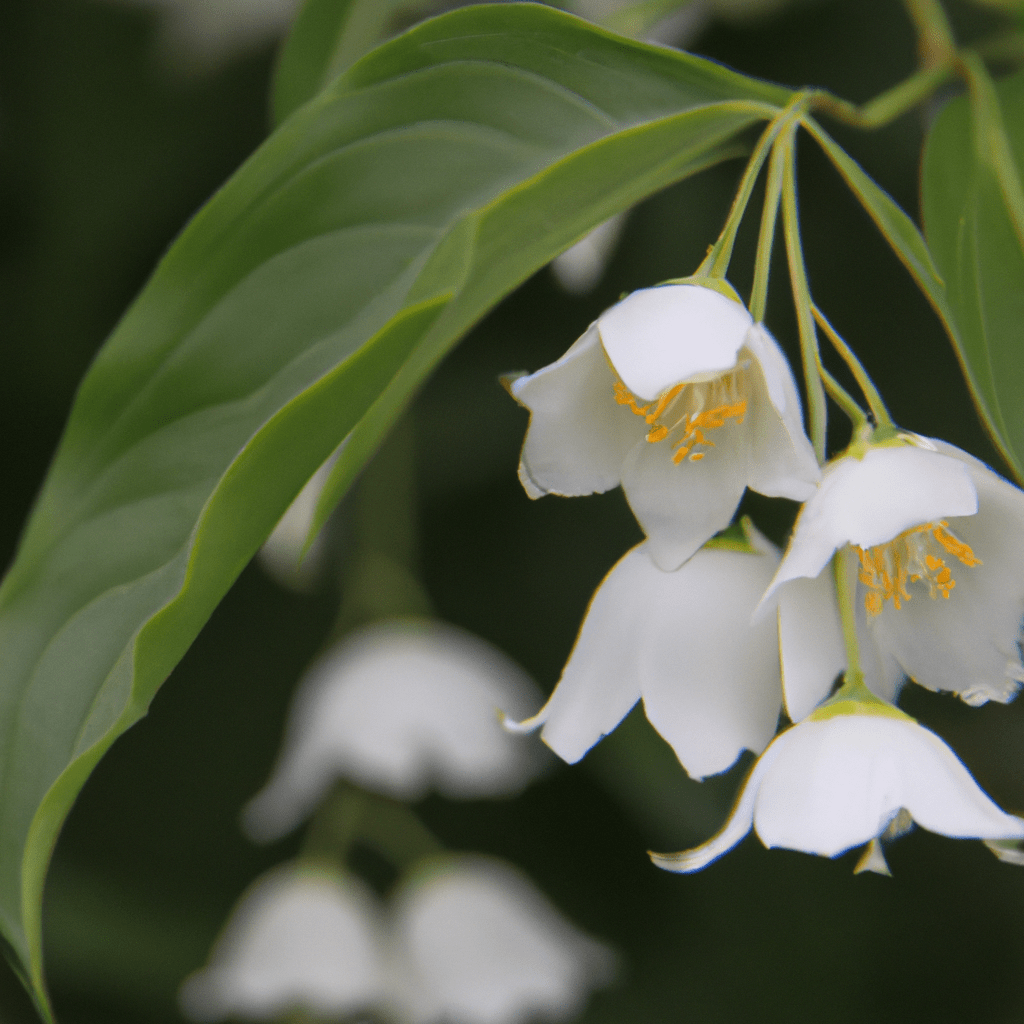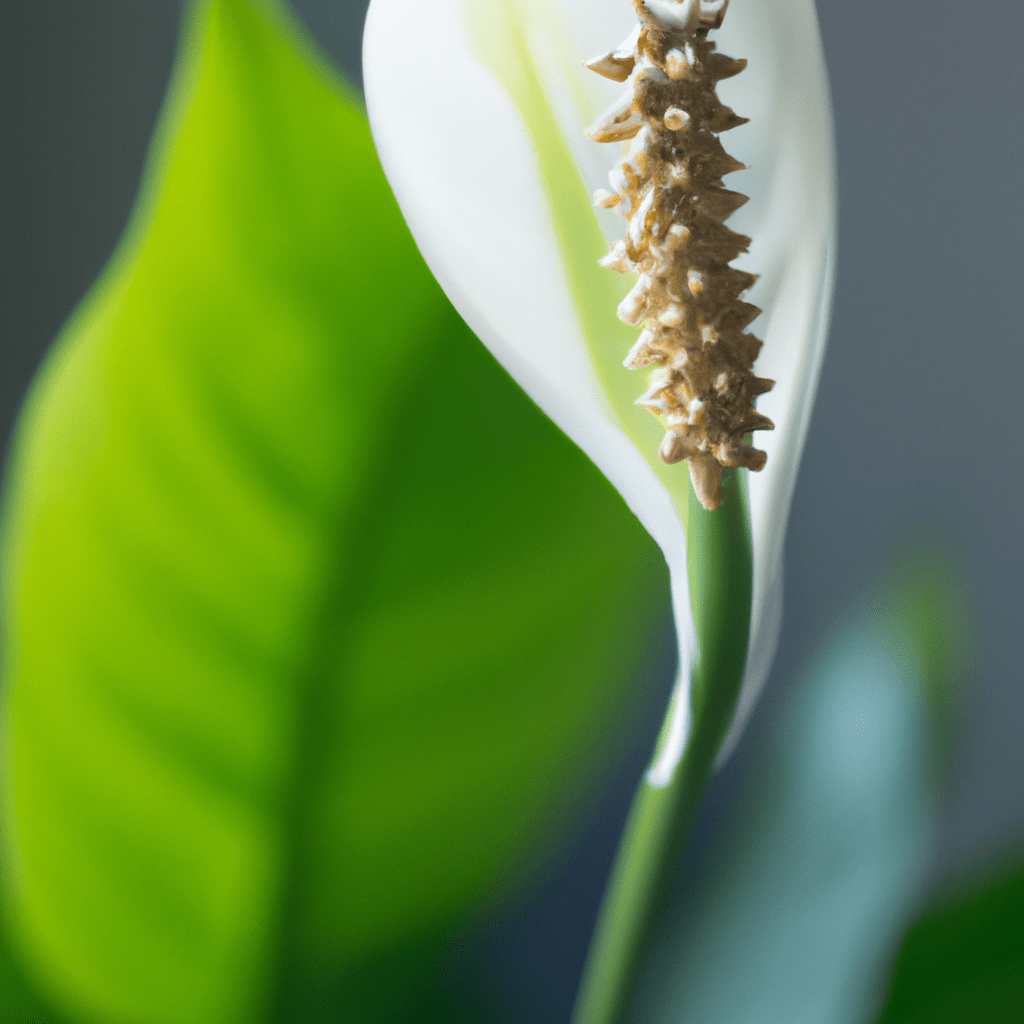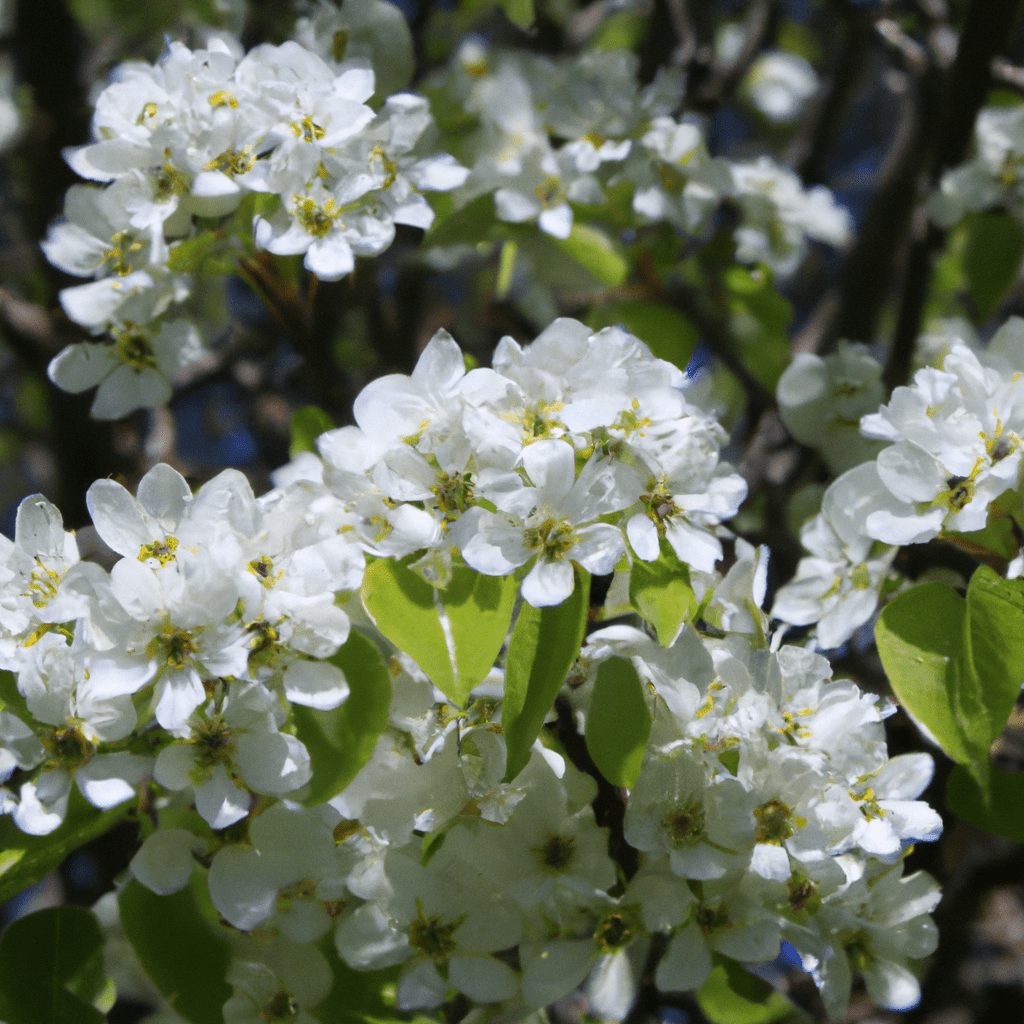Fact 1: Exquisite Blossoms
The Snowbell tree (Styrax) is renowned for its exquisite blossoms. The tree produces delicate, bell-shaped flowers that hang gracefully from its branches. These flowers come in various shades of white, pink, or cream, creating a stunning display during the blooming season.
Fact 2: Ancient Origins
The Snowbell tree has ancient origins, with fossils dating back millions of years. It belongs to the Styracaceae family, which is believed to have evolved during the Cretaceous period. This long history is a testament to the tree’s resilience and adaptability.
Fact 3: Global Distribution
Snowbell trees can be found in various parts of the world, including Asia, North America, and Europe. They thrive in diverse climates, from temperate regions to subtropical areas, making them versatile and widely cultivated for their ornamental value.
Fact 4: Botanical Diversity
The Snowbell tree genus, Styrax, comprises around 130 different species. Each species possesses unique characteristics, such as leaf shape, flower color, and growth habit. This diversity adds to the appeal and fascination of Snowbell trees for botanists and enthusiasts alike.
Fact 5: Graceful Canopy
Snowbell trees typically have a graceful, umbrella-shaped canopy. The branches spread out horizontally, creating a beautiful, rounded form. This natural architectural beauty makes Snowbell trees a popular choice for landscaping and garden design.
Fact 6: Fragrant Flowers
One of the captivating features of Snowbell trees is their fragrant flowers. The blossoms emit a delicate and pleasant scent that attracts pollinators like bees and butterflies. The sweet fragrance adds to the overall sensory experience of being around Snowbell trees.
Fact 7: Attracts Wildlife
Snowbell trees provide valuable resources for wildlife. The nectar-rich flowers attract bees and other pollinators, while the tree’s fruits and seeds are a source of food for birds and small mammals. The presence of Snowbell trees can enhance biodiversity in ecosystems.
Fact 8: Long Lifespan
Snowbell trees have the potential to live for many decades. With proper care and optimal growing conditions, some species of Snowbell trees can live up to 50 years or more. Their longevity allows them to become a cherished part of the landscape for generations.
Fact 9: Fall Color Show
While Snowbell trees are renowned for their stunning flowers, they also offer a captivating show of color during the autumn season. The tree’s leaves transform into vibrant shades of red, orange, and yellow, creating a mesmerizing display of fall foliage.
Fact 10: Medicinal Uses
Certain species of Snowbell trees have medicinal properties and have been used in traditional medicine for centuries. The bark, leaves, or other parts of the tree may be utilized for their therapeutic benefits, including treating ailments such as inflammation and respiratory issues.
Fact 11: Symbolism
Snowbell trees hold cultural and symbolic significance in different cultures. In some traditions, they represent purity, beauty, or spiritual enlightenment. The enchanting appearance of the Snowbell tree has inspired poets, artists, and storytellers throughout history.
Fact 12: Drought Tolerance
Many Snowbell tree species exhibit a remarkable tolerance for drought conditions. They have adapted to survive in regions with limited water availability, making them suitable for arid and semi-arid landscapes. This resilience makes Snowbell trees an attractive choice for sustainable gardening.
Fact 13: Shimmering Bark
Some Snowbell tree species have bark that shimmers or exfoliates, adding visual interest to their appearance. The peeling or flaking bark reveals different shades and
textures, creating a unique and captivating feature in the winter months.
Fact 14: Wildlife Habitat
Snowbell trees provide a habitat for various wildlife species. The dense foliage and branching structure offer shelter and nesting sites for birds. The tree’s fruits and seeds attract small mammals and contribute to the overall biodiversity of the ecosystem.
Fact 15: Bonsai Cultivation
Snowbell trees are popular choices for bonsai cultivation. Their small, delicate leaves and elegant growth patterns make them suitable for creating miniature landscapes in bonsai pots. The art of bonsai allows enthusiasts to appreciate the beauty of Snowbell trees on a smaller scale.
Fact 16: Cultivar Varieties
Through cultivation and selective breeding, a wide range of Snowbell tree cultivars have been developed. These cultivars may exhibit unique characteristics, such as different flower colors, compact growth habits, or enhanced disease resistance. They offer options for gardeners and landscape designers to choose the perfect Snowbell tree for their needs.
Fact 17: Habitat Restoration
Snowbell trees play a role in habitat restoration projects. Their ability to adapt to various soil conditions and their contribution to ecosystem diversity make them valuable components of restoration efforts. Planting Snowbell trees in degraded or disturbed areas can help establish a more balanced and resilient ecosystem.
Fact 18: Timber Uses
Some Snowbell tree species produce timber of commercial value. The wood is often used in crafting furniture, cabinetry, and other woodworking projects. It is known for its strength, durability, and attractive grain pattern, making it a sought-after material for artisans and craftsmen.
Fact 19: Natural Erosion Control
The extensive root systems of Snowbell trees aid in natural erosion control. They help stabilize soil on slopes, preventing erosion and the loss of valuable topsoil. The tree’s roots also contribute to soil fertility by improving drainage and nutrient cycling.
Fact 20: Bee-Friendly
Snowbell trees are considered bee-friendly plants. The flowers provide a valuable source of nectar for bees, aiding in their nutrition and contributing to the health of local bee populations. By planting Snowbell trees, individuals can support pollinators and promote a thriving ecosystem.
Fact 21: Environmental Adaptability
Snowbell trees display a remarkable ability to adapt to various environmental conditions. They can tolerate a range of soil types, including sandy, loamy, or clay soils. They can also withstand different light exposures, from full sun to partial shade, making them versatile in different garden settings.
Fact 22: Landscape Enhancements
Snowbell trees are known for their aesthetic appeal and ability to enhance landscapes. Whether planted as standalone specimens, used in groupings, or incorporated into mixed shrub borders, they add a touch of elegance and charm to outdoor spaces.
Fact 23: Pollination Mechanisms
The pollination mechanisms of Snowbell trees vary depending on the species. Some species rely on insect pollinators, such as bees or butterflies, to transfer pollen between flowers. Others may have self-pollinating capabilities, ensuring reproductive success even in the absence of external pollinators.
Fact 24: Versatile Garden Addition
Snowbell trees are versatile additions to a garden or landscape design. They can be utilized in various ways, such as providing shade, creating focal points, or adding vertical interest. Their adaptability and attractive features make them a valuable asset in garden planning.
Fact 25: Wildlife Attraction
The presence of Snowbell trees can attract a diverse array of wildlife to a garden or natural setting. Birds are particularly drawn to the tree’s flowers, fruits, and seeds, providing opportunities for birdwatching and fostering a thriving ecosystem.
Fact 26: Nectar Source for Butterflies
Butterflies are not only attracted to the
beauty of Snowbell tree flowers but also benefit from the nectar they provide. By planting Snowbell trees, gardeners can create a welcoming habitat for butterflies, contributing to their conservation and enjoying their delightful presence.
Fact 27: Winter Interest
Snowbell trees offer visual interest even during the winter months. Some species have attractive bark patterns, while others may retain dried seed pods or persistent fruits. These features add texture and intrigue to the winter landscape, ensuring year-round enjoyment.
Fact 28: Low Maintenance
Snowbell trees are generally low-maintenance once established. They have good resistance to pests and diseases, reducing the need for extensive interventions. Additionally, they require minimal pruning, making them suitable for gardeners seeking plants that require less hands-on care.
Fact 29: Cultural Significance
In some cultures, Snowbell trees hold cultural or symbolic significance. They may be associated with traditions, folklore, or celebrations, adding a layer of cultural depth to their appeal. Exploring the cultural connections of Snowbell trees can enrich the understanding and appreciation of these remarkable plants.
Fact 30: Educational Value
Snowbell trees offer educational value for nature enthusiasts, botanists, and educators. Studying their botanical features, growth habits, and ecological interactions provides insights into the natural world. Snowbell trees can be used as living classrooms, fostering a deeper connection with the environment.
Conclusion
The Snowbell tree (Styrax) is a fascinating and beautiful tree that captivates with its blossoms, foliage, and ecological contributions. From its stunning flowers and fragrant blossoms to its adaptability and environmental benefits, the Snowbell tree enriches landscapes and ecosystems. By exploring these 30 interesting facts, we can gain a deeper appreciation for the Snowbell tree’s unique qualities and the vital role it plays in the natural world.



